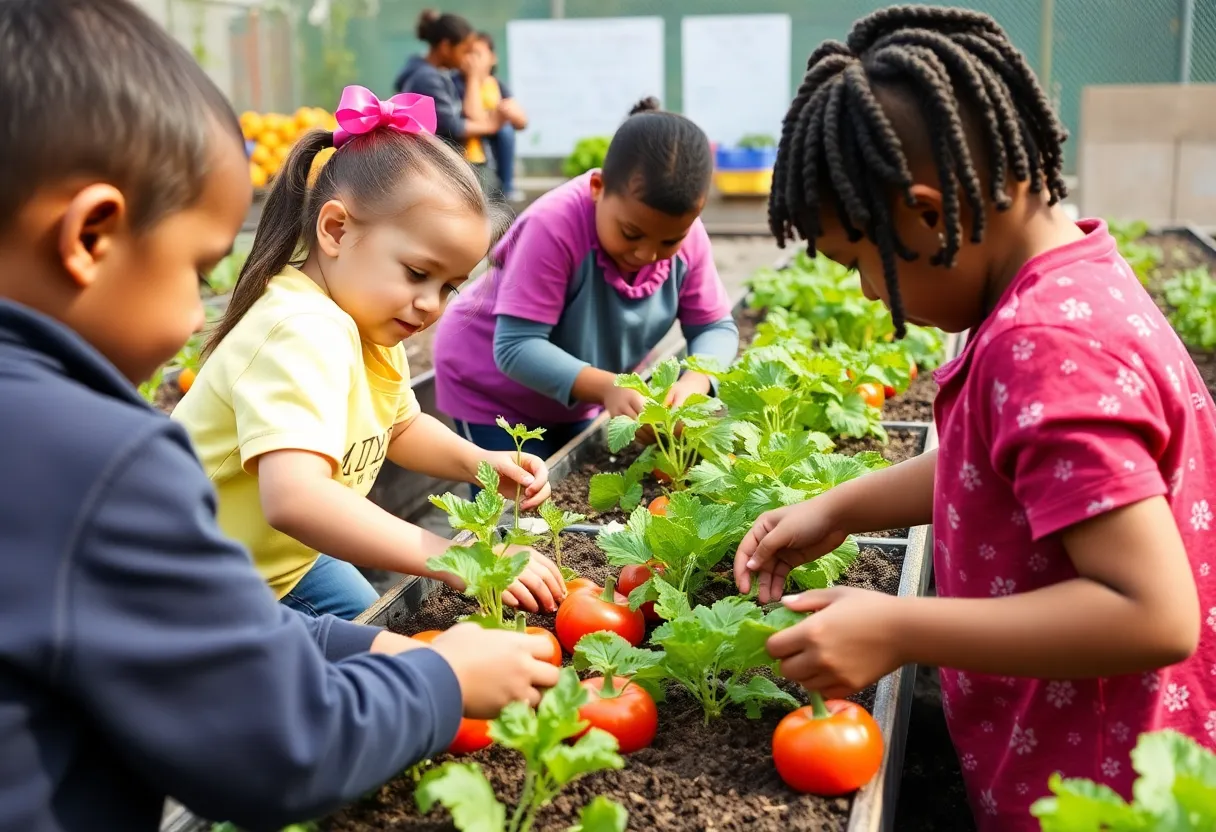News Summary
The USDA has unveiled an $18 million funding plan for the Farm to School Grant Program, the largest allocation in a single year. The initiative aims to improve access to fresh, local food in schools nationwide, though mixed reactions arise regarding recent application process changes and potential impacts on smaller projects. While the funding seeks to benefit students and family farms, stakeholders raise concerns about the effectiveness of these changes in promoting equitable food sourcing and nutrition education in schools.
Washington, D.C. – The U.S. Department of Agriculture (USDA) has announced a significant investment of $18 million for the Patrick Leahy Farm to School Grant Program for the year 2026. This funding marks the largest single-year allocation for the program, designed to enhance access to fresh, local food in schools across the nation.
The USDA’s announcement has been met with mixed reactions, particularly due to recent changes that could impact the landscape of farm-to-school initiatives. The new guidelines aim to streamline the application process, resulting in fewer but larger projects. However, experts express skepticism about whether this funding can effectively address the challenges posed by cuts in other areas of school food programs.
In March 2025, the USDA canceled $10 million previously allocated to the same program, which schools and organizations had already applied for, leading to concerns over food sourcing difficulties. The new grant structure introduces a minimum award amount of $100,000 and requires partnerships for applicants, which may disadvantage smaller entities. Historically, many initiatives under this program have thrived through smaller grants under $50,000, such as school garden installations.
The changes also consolidate the seven existing grant categories into a single category and eliminate a scoring system that previously favored equitable distribution to underserved communities. While the USDA positions these alterations as beneficial for focusing resources, stakeholders worry that they may undermine progress made in school nutrition.
The farm-to-school grant program, operational for over a decade, has its roots in the Healthy, Hunger-Free Kids Act signed into law by former President Barack Obama. Since its inception in 2013, the USDA has awarded a total of $100 million to over 1,200 projects, boosting access to fresh produce in educational institutions. Initially, the program’s annual funding started at $5 million, which has generally been augmented by additional Congressional funds each year.
Secretary of Agriculture Brooke Rollins highlighted that the continued funding is expected to benefit small family farms, ensure that students have better access to healthy foods, and motivate the next generation of agricultural producers. While this may sound promising, experts like Karen Spangler from the National Farm to School Network have pointed out potential drawbacks to the changes, particularly how they may hinder smaller applicant projects.
There is a growing concern that the recent USDA funding cuts, particularly to programs like SNAP-Ed and the Local Food for Schools program, could diminish not only the capacity of schools to source local food but also the overall effectiveness of nutrition initiatives implemented in schools. Stakeholders advocate for the USDA to consider the needs of farmers and school food service directors more attentively when shaping policies that influence these vital programs.
Despite the challenges and criticisms, stakeholders remain committed to maintaining and improving the farm-to-school framework. The mixed responses to the USDA’s funding changes reflect the complexity and critical importance of these programs in children’s nutritional education and access to healthy food options.
The USDA has not provided any responses regarding the implications of these funding changes or its strategic direction concerning local food sourcing initiatives. As the 2026 application process approaches, schools, farmers, and organizations will be closely monitoring how these developments unfold and their potential impact on future farm-to-school projects.
Deeper Dive: News & Info About This Topic
HERE Resources
Jim Hartnett Elected as Fellow of the American College of Construction Lawyers
Construction Industry Faces Challenges Amid Tariff Changes and AI Integration
Upcoming Garden Events in New York City – September 2025
Terri DiNitto Receives Industry Legend Award at Fair
New York State Fair Opens with Local Economic Impact
Central New York Golfers Achieve Notable Milestones
Labor Shortages Threaten New York City’s Economic Growth
New York City Faces Dramatic Decline in Tourism
New Cannabis Dispensary Opens in Aquebogue
New York’s Agritourism Booms with Innovative Experiences
Additional Resources
- Civil Eats: USDA’s Regional Food Business Centers Caught in Federal Funding Freeze
- Wikipedia: Food Security
- Farm Progress: US Risks Food Security by Cutting Agricultural Research Funding, Expert Warns
- Google Search: Agricultural Research Funding
- Brownfield Ag News: Potential Return of RFSI Funding
- Encyclopedia Britannica: Supplemental Nutrition Assistance Program
- Mother Jones: Trump SNAP Cuts Big Beautiful Bill for Food Aid
- Google News: Food Aids
- New York Times: Farmers, Food Bank Budget Cuts
- Google Scholar: Food Bank Funding Cuts
Author: STAFF HERE NEW YORK WRITER
The NEW YORK STAFF WRITER represents the experienced team at HERENewYork.com, your go-to source for actionable local news and information in New York, the five boroughs, and beyond. Specializing in "news you can use," we cover essential topics like product reviews for personal and business needs, local business directories, politics, real estate trends, neighborhood insights, and state news affecting the area—with deep expertise drawn from years of dedicated reporting and strong community input, including local press releases and business updates. We deliver top reporting on high-value events such as New York Fashion Week, Macy's Thanksgiving Day Parade, and Tribeca Film Festival. Our coverage extends to key organizations like the Greater New York Chamber of Commerce and United Way of New York, plus leading businesses in finance and media that power the local economy such as JPMorgan Chase, Goldman Sachs, and Bloomberg. As part of the broader HERE network, including HEREBuffalo.com, we provide comprehensive, credible insights into New York's dynamic landscape.





